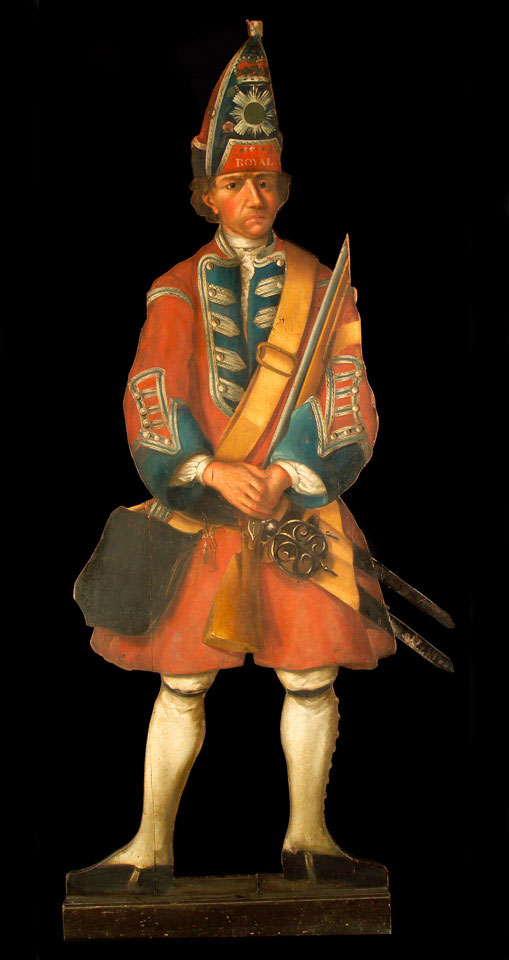
Online Collection
« Prev - 1 of 1 results - Next »
Dummy-board figure of a Grenadier of the Royal Scots Regiment, 1738 (c)
Oil on panel by an unknown artist, 1738 (c).
Life-size, cut-out figures painted on wood, often called dummy boards, were fashionable in grand houses in the eighteenth century. They were a sort of decorative joke designed to surprise visitors. Standing at the end of a passage or in the corner of a room, a dummy board would look, at first sight, like a real person.
To make the figure look more realistic and three-dimensional, it would be located so as to cast a shadow. To achieve this, the board would not be placed flat on a wall, but just in front of it. The effect was enhanced by bevelling (angling) the edges, so the viewer could not see the sides. This helped to trick the eye into believing the painted forms. Great care has been taken in accurately painting the uniform and equipment of this grenadier to make him look convincing.
Grenadiers were originally special assault troops who threw grenades (iron balls filled with gunpowder) at the enemy, as well as using muskets. In theory they were chosen for their height and strength, but in reality they were usually selected from veterans and more experienced soldiers.
NAM Accession Number
NAM. 2006-05-103-1
Copyright/Ownership
National Army Museum, Out of Copyright
Location
National Army Museum, Study collection
Object URL
https://collection.nam.ac.uk/detail.php?acc=2006-05-103-1

